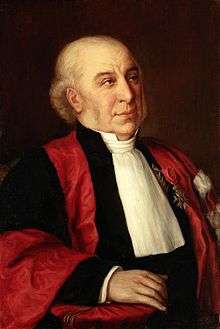Joseph Bienaimé Caventou
| Joseph Bienaimé Caventou | |
|---|---|
 | |
| Born |
30 June 1795 Saint-Omer, France |
| Died |
5 May 1877 (aged 81) Paris, France |
| Nationality | French |
| Fields | Pharmacology, Chemistry |
| Alma mater | Ecole de Pharmacie de Paris |
| Known for | Isolating alkaloids from vegetables |
| Notable awards | Elected to the Académie Nationale de Médecine in 1821 |
Joseph Bienaimé Caventou (30 June 1795 – 5 May 1877) was a French pharmacist. He was a professor at the École de Pharmacie (School of Pharmacy) in Paris. He collaborated with Pierre-Joseph Pelletier in a Parisian laboratory located behind an apothecary. He was a pioneer in the use of mild solvents to isolate a number of active ingredients from plants, making a study of alkaloids from vegetables. Among their successes were the isolation of the following compounds:
| Year | Isolated compound(s) | Source |
|---|---|---|
| 1817 | Chlorophyll | |
| 1817 | Emetine | Ipecacuanha |
| 1818 | Strychnine | Nux vomica |
| 1819 | Brucine | Nux vomica |
| 1820 | Cinchonine and quinine | Cinchona bark |
| 1821 | Caffeine |
Quinine sulfate later proved to be an important remedy for the disease malaria. Quinine is the active anti-malarial ingredient in the bark of cinchona tree.[1][2]
Neither of the partners chose to patent their discovery of this compound, releasing it for everybody to use. In 1823 they discovered nitrogen in alkaloid compounds. Other compounds they discovered include colchicine and veratrine.
The crater Caventou on the Moon is named after him.
References
- ↑ Haas L (1994). "Pierre Joseph Pelletier (1788–1842) and Jean Bienaime Caventou (1795–1887)". J Neurol Neurosurg Psychiatry. 57 (11): 1333. PMC 1073182
 . PMID 7964807. doi:10.1136/jnnp.57.11.1333.
. PMID 7964807. doi:10.1136/jnnp.57.11.1333. - ↑ Kyle R, Shampe M (1974). "Discoverers of quinine". JAMA. 229 (4): 462. PMID 4600403. doi:10.1001/jama.229.4.462.
Further reading
- Delepine, Marcel (1951). "Joseph Pelletier and Joseph Caventou". Journal of Chemical Education. 28 (September): 454–461. doi:10.1021/ed028p454.